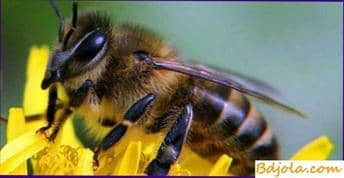
Protein dystrophy is an infectious disease that occurs due to a lack of protein feed during the spring development of families.
Causes of the disease. The disease occurs when there is a lack of benign perga in families in the spring when there is a large amount of open decay. The quantitative lack of pergi or its inferiority causes the breakdown of protein metabolism in bees-nurses. They are rapidly depleted, smaller, lighter in weight, protein breakdown, rapid aging, wear of bees. Simultaneously, the larvae receive protein-depleted food. They lag behind in weight, and outgoing young bees become non-viable and die at the age of 3-10 days.
Course of the disease. The disease occurs in the spring, usually in May and June.
Symptoms of the disease. With protein deficiency in the nests of the families of perga little or no, perhaps it is of poor quality. There is no fresh pollen. Breeding, young and old bees.
Diagnosis. The disease is established on the basis of the insufficiency of Perga in hives, the absence of pollen from the outside, on the basis of the mass death of young gray and old black shiny bees, the ejection of larvae and the absence of other diseases.
Prevention. Providing families with spring protein food.
Control measures. Feeding families with protein food.
Косметические кремы из воск. Вывода маток на молочко.
Diseases of bees